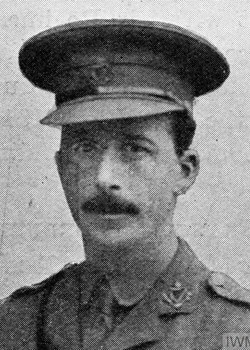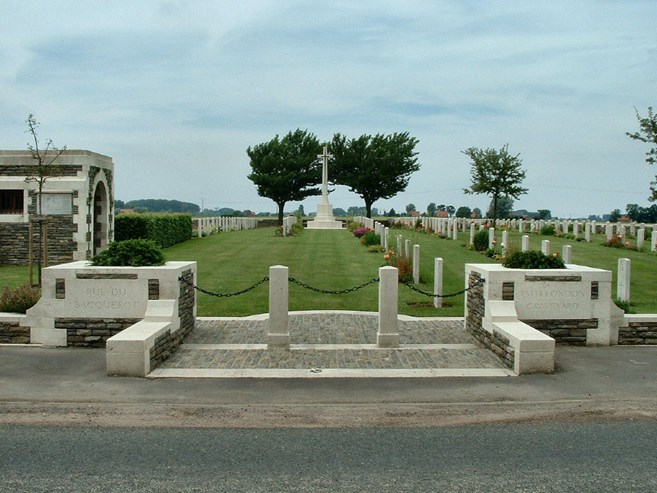24 February 1915: Captain Gilbert Thompson
- Home
- On This Day
- 24 February 1915: Captain Gilbert Thompson

Captain Gilbert Thompson was killed on this day in 1915
He was born in 1873, the son of Reginald and Frances H. Thompson. Gilbert married Ethel, the second daughter of Mr D'Arcy Wyvill, of Constable Burton and Denton Park, Yorkshire and they had one son and two daughters. Although living at 66, Palace Gardens Terrace, Kensington, London, Gilbert was born and brought up in Yorkshire.
He joined the Connaught Rangers in 1899 and served eight years in India. Although regimentally he belonged to the 2nd Battalion of the Connaught Rangers, in January 1913 he was appointed as the Adjutant to the Kensingtons (13th London Regiment).

Above: 'The Kensingtons at Laventie by Eric Kennington Image: © IWM (Art.IWM ART 15661)
Reports say Gilbert Thompson was 'shot down in the firing line' on 24 February 1915. The war diary (shown below) provides a little more information, including the fact there had been 'a heavy fall of snow'. It seems Gilbert was 'shot in the head' and 'his death is greatly deplored by all ranks'.

Captain Thompson is now buried appropriately enough in the Rue-de Bacquerot (13th London) Graveyard at Laventie.

The above painting by Eric Kennington is rightly famous for its power. 'The Kensingtons at Laventie' is the artist's most exceptional and most famous work.
A platoon of British soldiers standing in a village street. There is an exterior whitewashed wall in the background, snow on the ground, debris scattered around to the right, and above, a calvary cross in the top corner of the composition. The figures are loosely grouped on the left, with one man lying sprawled on the ground below, and another standing off to the right. Each man stares off in a different direction. Metal objects, a helmet, a fork and a belt-buckle are picked out in gold metallic paint.
The painting depicts men in Kennington's unit, Platoon no. 7, C Company, and includes a self-portrait. He shows a moment when his platoon, exhausted from four days and sleepless nights in the fire trench in twenty degrees of frost and almost continuous snow, have made their way through the deep mud of a communications trench to the comparative protection of the ruined village at Laventie. The men are waiting for their Corporal to give the order to 'Fall in' for the next part of the journey: a march of five miles to a billet outside the shelling area.





